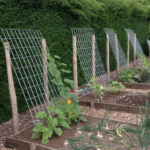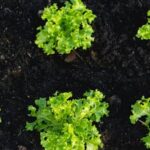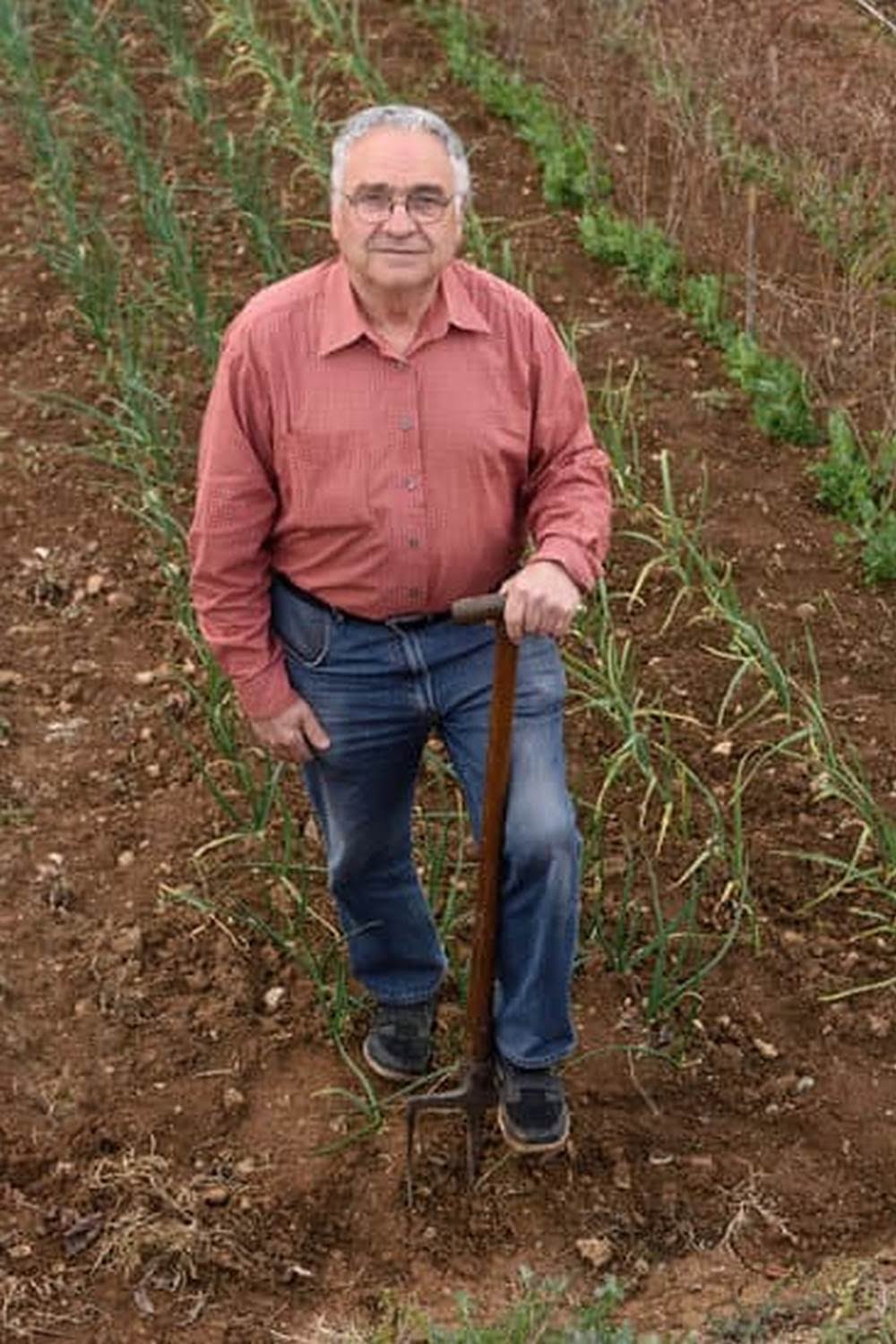Are you looking for vegetable combination ideas for container gardens? Growing vegetables in containers offers numerous benefits, from saving space to having fresh produce right at your fingertips. However, it’s essential to choose the right vegetable combinations for successful container gardening.
When it comes to container gardening, the possibilities are endless. Not only does it allow urban dwellers and those with limited outdoor space to grow their own vegetables, but it also provides flexibility and convenience. With the right combinations of veggies, you can maximize your harvest and create a thriving mini-garden on your balcony, patio, or even windowsill.
In this article, we will explore the various aspects of vegetable gardening in containers, from choosing the right containers to selecting the best vegetables for successful growth. We’ll also delve into companion planting, vertical gardening ideas, seasonal planting guide, maintenance tips, and creative design ideas for arranging your vegetable combinations.
Whether you’re a beginner or an experienced gardener looking for new inspiration, this guide will help you create a bountiful and beautiful container garden full of delicious homegrown veggies.
Choosing the Right Containers
When it comes to choosing the right containers for your vegetable garden, there are several options to consider. Each type of container has its own advantages and considerations, which can affect the success of your vegetable combinations in a container garden.
Container Types
There are various types of containers that are suitable for growing vegetables, including traditional pots, raised beds, hanging baskets, and fabric grow bags. Traditional pots are versatile and come in various sizes, making them suitable for a wide range of vegetables. Raised beds provide excellent drainage and can accommodate larger plants with deeper root systems.
Hanging baskets are great for small-space gardening and can be used to grow trailing or vining vegetables. Fabric grow bags are lightweight and breathable, allowing for great aeration and root development.
Advantages
Each type of container offers unique advantages for vegetable gardening. Traditional pots allow for easy mobility and arrangement flexibility, making them ideal for small gardens or patios. Raised beds provide better soil drainage and prevent soil compaction, leading to healthier plant growth. Hanging baskets save space and add visual interest to your garden. Fabric grow bags are portable and can be folded up when not in use, making them convenient for seasonal planting.
It’s important to consider the specific needs of your chosen vegetable combination ideas for container gardens when selecting the right containers. Factors such as space availability, sunlight exposure, watering requirements, and mobility should all be taken into account when deciding on the best type of containers for your vegetable garden.
Best Vegetables for Container Gardens
When it comes to choosing the right vegetables for your container garden, there are several factors to consider. Not all vegetables are well-suited for container gardening, so selecting the best options can make a significant difference in the success of your harvest. Here are some top vegetables that thrive in container gardens:
- Tomatoes: Tomatoes are one of the most popular choices for container gardening. They require ample sunlight and a large container to support their growth, but they are relatively easy to care for and produce a bountiful yield.
- Peppers: Both sweet and hot peppers can thrive in containers, making them an excellent choice for small-space gardening. They prefer warm weather and well-draining soil, making them ideal for container cultivation.
- Leafy Greens: Vegetables like lettuce, spinach, and kale are well-suited for growing in containers. They have shallow roots and can be harvested continuously, making them a convenient option for container gardening.
In addition to these top choices, other vegetables like cucumbers, beans, and radishes also do well in containers with proper care and maintenance. When selecting vegetables for your container garden, consider the specific attributes that make them ideal choices. Look for compact varieties that don’t require a lot of space to spread out or those with shallow root systems that can thrive in the constraints of a container.
Furthermore, it’s important to take into account the growth habits of each vegetable. Some plants may need trellising or support as they grow, while others may require regular pruning to keep them contained within the limits of the container. By carefully considering these factors when choosing your vegetable combinations for container gardens, you can set yourself up for a successful and bountiful harvest throughout the growing season.
Companion Planting
When it comes to growing vegetables in container gardens, the concept of companion planting is essential to consider. Companion planting involves growing different types of vegetables together in a way that benefits both plants. Certain vegetables complement each other when grown together, either by deterring pests, providing shade, or improving soil fertility. Here are some vegetable combination ideas for container gardens using the companion planting technique:
- Tomatoes, Basil, and Garlic: Planting tomatoes with basil and garlic can help repel common tomato pests such as aphids and hornworms. The aromatic properties of basil and garlic can also enhance the flavor of tomatoes.
- Carrots, Onions, and Radishes: This classic combination works well in containers as carrots and radishes provide natural pest control for onions by repelling carrot flies and onion flies. Additionally, the different root depths of these vegetables allow them to grow harmoniously without competing for space.
- Cucumbers, Beans, and Peas: Growing cucumbers with beans and peas can provide structural support to the cucumber plants while also enriching the soil with nitrogen. The climbing nature of beans and peas also maximizes vertical space in container gardens.
By incorporating these vegetable combination ideas into your container gardening plans, you can take advantage of companion planting to create a thriving and sustainable mini ecosystem within your containers. Not only will these combinations make for healthier plants, but they will also contribute to a bountiful harvest of fresh produce throughout the growing season.
Vertical Gardening
Utilizing Vertical Space
One of the biggest advantages of vertical gardening in containers is the ability to maximize space. By utilizing vertical space, gardeners can grow more vegetables in a limited area, making it an ideal solution for those with small outdoor spaces or urban gardens. Consider using hanging baskets, wall-mounted planting pockets, or trellises to make the most of your vertical space.
Choosing the Right Vegetables
When it comes to vertical gardening in containers, it’s important to choose the right vegetables that are suitable for this type of growing environment. Opt for vegetables that have a vining or trailing growth habit, such as tomatoes, cucumbers, peas, and beans. These plants can be trained to grow vertically, either with the help of stakes or by allowing them to naturally climb up trellises or other support structures.
Creative Arrangement Ideas
Incorporating vertical gardening into your container garden also allows for creative arrangement ideas. Mix and match different types of vegetables that grow well together and have complementary care needs. For example, plant tall-growing vegetables like tomatoes behind smaller herbs or leafy greens to create a visually appealing and functional arrangement. Additionally, consider incorporating trailing flowers or ornamental plants to add a pop of color and aesthetic appeal to your vertical container garden.
By implementing these creative ideas for vertical gardening in containers, you can make the most of your space while also enjoying a bountiful harvest of fresh vegetables. With careful planning and proper care, vertical container gardens can be both productive and visually stunning.
Seasonal Planting
When it comes to planting vegetables in containers, understanding the seasonal requirements is essential for a successful harvest. Different vegetables thrive in specific seasons, and it’s important to choose the right combinations for each time of the year.
In the spring, cool-season vegetables like lettuce, spinach, radishes, and peas are perfect for container gardens. These vegetables can tolerate cooler temperatures and provide a bountiful harvest before the heat of summer arrives. Consider mixing these greens with compact varieties of carrots or onions for a well-balanced container garden.
As the weather warms up in the summer, it’s time to transition to warm-season vegetables that love the heat. Tomatoes, peppers, cucumbers, and eggplants are excellent choices for containers during this time. Pairing these vegetables with herbs such as basil or oregano not only adds flavor to your dishes but also helps repel pests and attract beneficial insects.
When fall approaches, it’s time to plan for a final vegetable harvest before winter sets in. Leafy greens like kale and collard greens thrive in cooler temperatures and can withstand light frosts. Additionally, root vegetables such as beets, turnips, and carrots can be planted in containers during the fall season. Mixing these different types of vegetables provides an appealing visual display while maximizing your container garden’s yield even as temperatures drop.
By understanding which vegetable combinations work best for each season, you can create a thriving container garden that provides fresh produce throughout the year. With careful planning and attention to seasonal requirements, your vegetable combinations in container gardens will flourish regardless of the changing weather conditions.
Maintenance Tips
When it comes to maintaining and caring for vegetable combinations in container gardens, there are several essential tips to keep in mind. One of the most critical aspects of maintenance is watering. Container gardens tend to dry out more quickly than traditional garden beds, so it’s important to monitor the moisture levels regularly. It’s recommended to water the vegetables in the morning or evening to prevent evaporation and ensure that the plants have enough water to thrive.
In addition to regular watering, fertilizing is also crucial for the health and growth of vegetables in container gardens. Since containers have limited soil volume, nutrients can deplete more quickly. Using a balanced fertilizer or organic compost can help replenish essential nutrients and promote healthy plant growth. Be sure to follow the specific fertilization schedule for each type of vegetable in your container garden for optimal results.
Pest control is another vital aspect of maintaining vegetable combinations in container gardens. Pests such as aphids, spider mites, and caterpillars can wreak havoc on your plants if left unchecked. Inspect your plants regularly for any signs of pest infestation and take prompt action using organic pest control methods when necessary. This may include hand-picking pests, spraying with insecticidal soap, or introducing beneficial insects like ladybugs to combat harmful pests naturally.
Lastly, proper pruning and grooming of your vegetable plants are essential for maintaining an attractive and healthy container garden. Removing dead or yellowing leaves, pinching off spent flowers, and providing support for vining plants can help improve air circulation and prevent diseases from taking hold. By following these maintenance tips, you can ensure that your vegetable combinations thrive in your container garden.
| Maintenance Tips | Details |
|---|---|
| Watering | Monitor moisture levels regularly; water in the morning or evening; prevent evaporation |
| Fertilizing | Use balanced fertilizer or organic compost; follow specific fertilization schedule for each type of vegetable |
| Pest Control | Inspect plants regularly for signs of infestation; use organic pest control methods; prune and groom plants |
Creative Design Ideas
In conclusion, growing vegetables in container gardens can be a rewarding and fulfilling experience, especially when the right vegetable combinations are chosen. The benefits of this type of gardening, such as space-saving and convenience, make it an attractive option for those with limited outdoor space. By selecting the best vegetables for container gardens and implementing creative design ideas, individuals can create visually appealing and productive arrangements that enhance the beauty of their outdoor living areas.
When considering vegetable combination ideas for container gardens, it is important to take into account the specific attributes of each plant and how they complement one another. For example, pairing tall-growing plants with shorter ones can create a harmonious balance in the container garden. Additionally, using color schemes and arrangement patterns can contribute to a visually stunning display while maximizing space and yield.
Vertical gardening offers an innovative solution for utilizing vertical space in container gardens. By incorporating trellises or vertical planters, individuals can grow a variety of vegetables such as tomatoes, cucumbers, and pole beans upwards, optimizing space and creating an eye-catching display. With the right maintenance tips and seasonal planting guide, individuals can enjoy a bountiful harvest year-round from their carefully curated vegetable combinations in container gardens.
Frequently Asked Questions
What Vegetables Can I Plant Together in a Container?
Certain vegetables thrive when planted together in a container. For example, tomatoes, basil, and onions make good companions as they have complementary growth habits and soil requirements.
What Is the Best Mix for Container Gardening?
The best mix for container gardening is a well-draining, lightweight potting mix that contains a blend of peat moss, vermiculite or perlite, and compost. This mix provides good aeration and moisture retention for the plants.
What Are the Best Vegetables for Container Gardening?
Many vegetables are well-suited for container gardening, including tomatoes, peppers, lettuce, spinach, radishes, carrots, and herbs like basil and cilantro. These plants can thrive in containers if provided with adequate sunlight and proper care.

If you’re looking to get into vegetable gardening, or are just looking for some tips on how to make your current garden better, then you’ve come to the right place! My name is Ethel and I have been gardening for years. In this blog, I’m going to share with you some of my best tips on how to create a successful vegetable garden.





